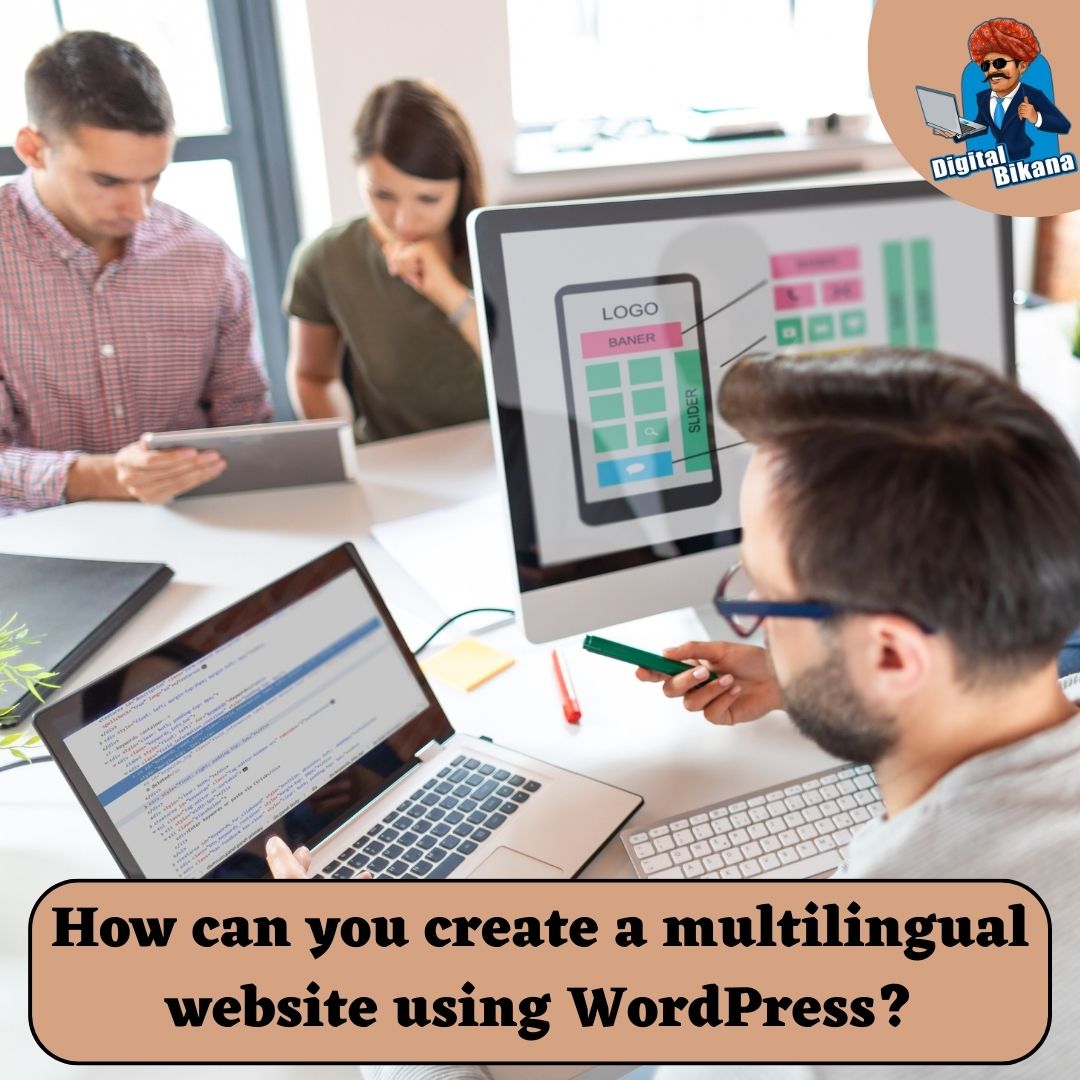How can you create a multilingual website using WordPress?
In this article we are going to talk about How can you create a multilingual website using WordPress? In today’s globalized world, reaching a diverse audience is crucial for many website owners. One effective way to expand your website’s reach is by creating a multilingual website that caters to users in different languages. Fortunately, WordPress, the popular content management system (CMS), provides robust tools and plugins that make it relatively easy to create a multilingual website.
How can you create a multilingual website using WordPress?
In this article, we will explore how you can achieve this goal using WordPress.
Why Create a Multilingual Website?
Before diving into the process, it’s essential to understand the benefits of having a multilingual website:
1. Expanded Audience
By offering your website content in multiple languages, you can reach a broader audience worldwide. This opens up new markets and increases your chances of engaging with potential customers or readers who prefer browsing the web in their native language.
2. Improved User Experience
Providing content in users’ preferred languages enhances their browsing experience. Visitors are more likely to stay on your website, navigate through the pages, and understand your offerings or message when it’s presented in a language they are comfortable with.
Read Also: What are Breadcrumbs and How can you implement them in a WordPress Website?
3. Enhanced SEO
A multilingual website can significantly boost your search engine optimization (SEO) efforts. By targeting keywords in different languages, you increase the chances of ranking higher in search results for those specific language queries.
Step-by-Step Guide to Creating a Multilingual Website:
Now let’s delve into the process of creating a multilingual website using WordPress:
1. Choose a Translation Plugin
WordPress offers several translation plugins that simplify the process of creating a multilingual website. Two popular options are:
a. WPML (WordPress Multilingual Plugin)
WPML is a comprehensive and feature-rich translation plugin. It allows you to create multiple language versions of your website, translate posts and pages, manage language switchers, and more.
b. Polylang
Polylang is another powerful translation plugin that provides an intuitive interface for managing multilingual content. It supports both manual and automatic translations, enables language switching, and offers compatibility with various themes and plugins.
Research these plugins and choose the one that best fits your needs and budget.
2. Install and Activate the Translation Plugin
Once you’ve selected a translation plugin, install and activate it on your WordPress website. You can do this by navigating to the “Plugins” section in your WordPress dashboard, clicking on “Add New,” and searching for the chosen plugin. Install and activate it from the search results.

3. Configure the Translation Plugin
After activating the translation plugin, you’ll need to configure its settings. Typically, you’ll be prompted to choose the default language for your website and add additional languages.
You’ll also set up language switchers, which allow users to switch between languages on your website. Language switchers can be displayed as flags, dropdown menus, or other visual elements. Configure the switcher options based on your preferences.
Read Also: What are Shortcodes in WordPress and how can you use them?
4. Translate Your Website Content
With the translation plugin configured, it’s time to start translating your website content. This includes posts, pages, menus, widgets, and other elements.
Using the translation plugin’s interface, you can create translations for each piece of content. Some plugins provide manual translation options where you can enter the translated text manually. Others offer automatic translation integration with popular translation services like Google Translate. However, it’s important to note that automatic translations may not always be accurate, so manual review and editing are recommended.
Remember to translate all essential elements, such as headings, titles, meta descriptions, and image alt tags, to ensure a fully localized experience for your multilingual audience.
5. Customize Language Switchers
Language switchers play a crucial role in allowing users to switch between languages on your website. Customize the appearance and placement of the language switcher to align with your website’s design and user experience. Most translation plugins provide options to control the style, position, and behavior of the language switchers.
Read Also: How can you integrate social media into a WordPress website?
6. Test and Optimize
Before launching your multilingual website, thoroughly test all the language versions to ensure translations are accurate and the user experience is seamless. Make sure to check for any problems with how your website looks, any links that don’t work, or any missing translations. Also, pay attention to SEO optimization for each language by utilizing language-specific keywords and meta tags.
Monitor your website’s performance and user feedback after the launch. Continuously optimize and refine your multilingual website based on user behavior and preferences.

Conclusion
Expanding your website’s reach by creating a multilingual version is an effective way to connect with a global audience and improve the user experience. With WordPress and the right translation plugin, you can easily create and manage a multilingual website. By following the step-by-step guide provided in this article, you can effectively translate your content, customize language switchers, and optimize your multilingual website for success. Embrace the power of multilingualism and watch your website thrive in the global market. So, Now I hope you have understood about Create a multilingual website using WordPress.
You can also checkout this website designing institute to learn digital marketing course by enrolling in our course Or Contact Digital Bikana on +91-8949483728

